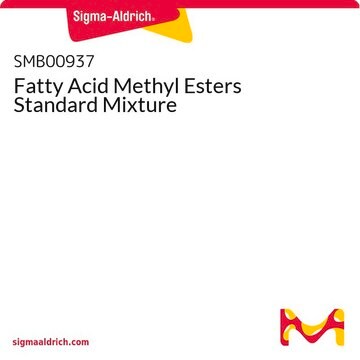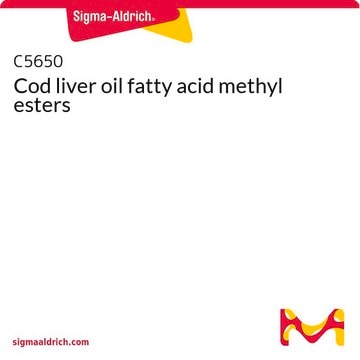MAK224
Fatty Acid Methylation Kit
Manufactured by Nacalai Tesque, Inc.
About This Item
Recommended Products
usage
sufficient for 100 tests
application(s)
cosmetics
food and beverages
sample preservation
storage temp.
room temp
General description
Suitability
Principle
related product
Signal Word
Danger
Precautionary Statements
Hazard Classifications
Acute Tox. 3 Dermal - Acute Tox. 3 Inhalation - Acute Tox. 3 Oral - Aquatic Chronic 2 - Asp. Tox. 1 - Eye Dam. 1 - Flam. Liq. 2 - Met. Corr. 1 - Repr. 2 - Self-heat. 1 - Skin Corr. 1A - STOT RE 2 - STOT RE 2 Inhalation - STOT SE 1 - STOT SE 3
Target Organs
Central nervous system, Eyes, Nervous system
Supplementary Hazards
Storage Class Code
4.2 - Pyrophoric and self-heating hazardous materials
Flash Point(F)
-14.8 °F
Flash Point(C)
-26 °C
Certificates of Analysis (COA)
Search for Certificates of Analysis (COA) by entering the products Lot/Batch Number. Lot and Batch Numbers can be found on a product’s label following the words ‘Lot’ or ‘Batch’.
Already Own This Product?
Find documentation for the products that you have recently purchased in the Document Library.
Customers Also Viewed
Our team of scientists has experience in all areas of research including Life Science, Material Science, Chemical Synthesis, Chromatography, Analytical and many others.
Contact Technical Service













